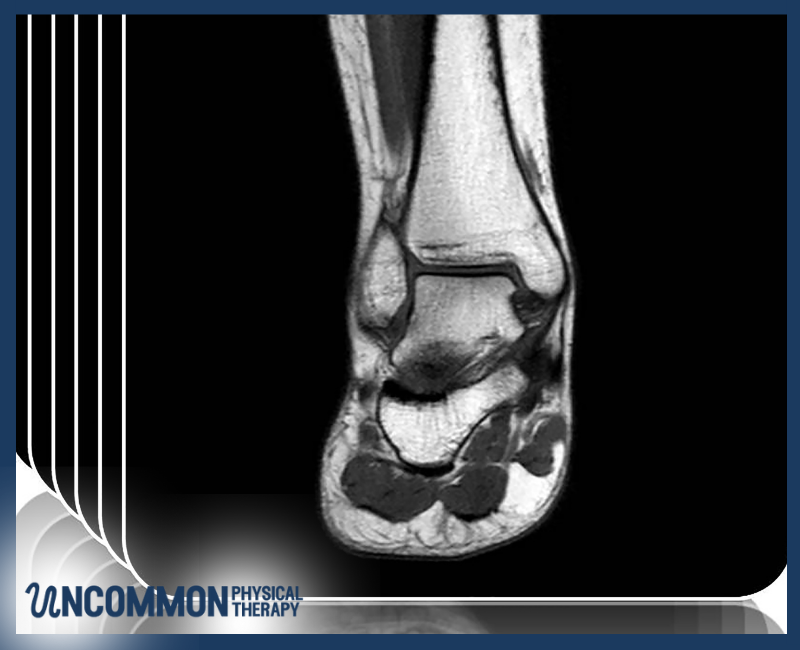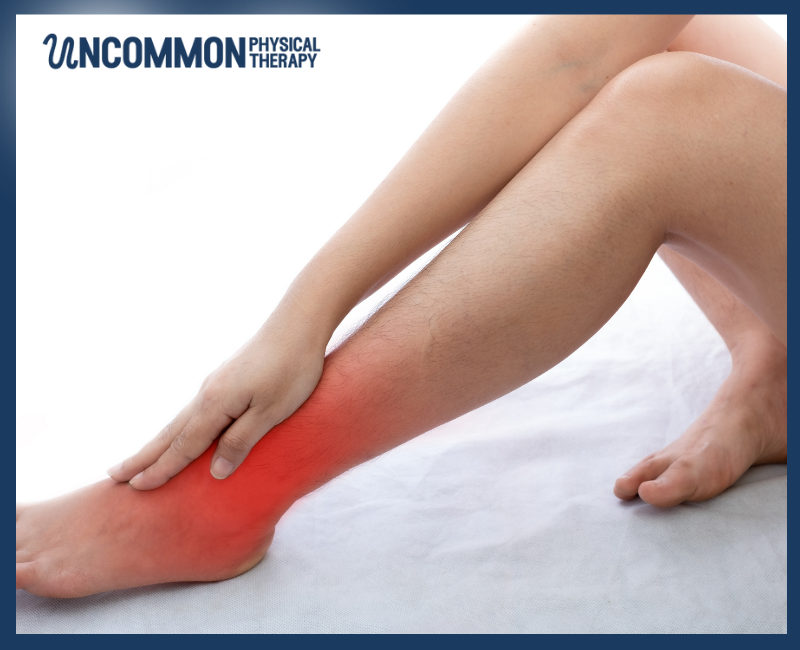Ankle pain while walking can be a frustrating and limiting experience. It can be caused by various factors, including injuries, overuse, and underlying medical conditions. Understanding the potential causes of ankle pain is essential for identifying the underlying issue and seeking appropriate treatment. Learn here how to alleviate discomfort and prevent future problems. If you have questions, come in and see us. You do not have to live with pain and decreased mobility. We will speak with you and construct a personalized program of recovery, complete with our full support!
Ankle Pain When Walking: Why They Hurt and What You Can Do
What Can Cause General Ankle Pain When Walking?
Injuries
Injuries that can cause ankle pain include:
- Fractures
- Tendon sprains/tears
- Ligament sprains/tears
- Dislocations
Sprained Ankle
A sprained ankle occurs when the ligaments that support the ankle stretch too far and can tear.
A sprained ankle can cause symptoms such as pain (particularly with walking), swelling, and bruising.
There are three grades of ankle sprains:
- Grade 1: Mild injury with stretched ligaments and possible slight or microscopic ligament tissue tearing
- Grade 2: Partially torn ligaments
- Grade 3: Severe injury with fully torn ligaments that may require more extensive treatment (possibly surgery)
Broken Ankle
The injury can cause symptoms such as:
- Sudden, sharp pain
- Swelling
- Popping or snapping sound at the time of injury
- Difficulty walking or bearing weight
- Odd angle or deformity of the ankle
- Bruising
- Tenderness
- Numbness and coolness in the foot (in some cases)
Ankle fractures can be classified as:
- Nondisplaced: Bones are not out of place
- Displaced: Broken bone fragments are separated, with possible breaks in multiple areas and possible ankle joint dislocation
- Open/compound: Emergency situation in which broken bones break through the skin
A high ankle sprain is a syndesmosis injury that involves just the ligaments.
A syndesmosis injury may also involve a ligament sprain and one or more fractures. This usually requires surgery.
Overuse
Overuse injuries typically cause an aching pain that comes on gradually, and is often first noticed as discomfort during certain activities, such as walking or running.
If not addressed, the pain becomes more persistent and can lead to conditions such as:
Conditions
Ankle pain can occur with certain conditions.
Arthritis
- Osteoarthritis:Degenerative wear and tear. Cartilage wears away and becomes frayed and rough, resulting in bone rubbing on bone, leading to pain and stiffness.
- Rheumatoidarthritis: Chronic, autoimmune disease. Immune cells attack the synovium (connective soft tissue membrane) covering the joint, causing it to swell and eventually invade and damage bone, cartilage, ligaments, and tendons. Can cause serious joint deformity.
- Posttraumatic arthritis: Develops after an injury, sometimes years later. Causes cartilage between the joints to wear away.
Osteoarthritis is the most common form of arthritis.
Unlike osteoarthritis in other joints, osteoarthritis of the ankle usually (in about 90% of cases) develops after an injury, typically a severe strain or fracture that happened years or decades ago.
The most common symptoms of osteoarthritis are:
- Pain with movement
- Stiffness, especially when moving after rest
- Swollen joints
- Less movement in the joint
- Loose or unstable feeling in the joint
- Joint warmth and redness
- Difficulty walking
Posterior Tibial Tendon Dysfunction
PTTD, also called progressive collapsing foot deformity (PCFD) or adult acquired flatfoot (AAF), is an inflammation of the tendon that runs from the tibialis posterior (a muscle in the lower leg) behind the inside bone on the ankle and attaches to the sole of the foot. This tendon helps hold the arch of the foot up and can become inflamed with overuse or injury.
This can result in flattening of the arch of the foot and other deformities.
Symptoms of PTTD may include:
- Pain/swelling in the arch, along the inside of the foot and ankle, or on the outside of the ankle
- Pain and weakness with activities such as standing (especially on toes), walking (especially on uneven surfaces), and going up and down stairs
- An ankle that rolls inward
Gout
Gout is a type of inflammatory arthritis caused by a buildup of uric acid (a waste product of breaking down purines in the body’s tissues and many foods) in the body. Gout usually occurs as flares causing pain, swelling, and redness in the joint. These typically last a week or two and then improve.
It usually affects the big toe but can occur in any joint, including the ankle. After years of having gout, tophi (lumps of uric acid) can form beneath the skin around the ankles.
Other Conditions
Other conditions that can cause ankle pain include:
Achilles Tendon Rupture
The Achilles tendon is the band of tissue that attaches the calf muscles to the heel.
- Popping or snapping sound during the injury
- Sharp, sudden pain in the heel
- Swelling
- Difficulty walking
Heel Bursitis
Retrocalcaneal bursitis occurs when the bursa (a small, fluid-filled sac) between the back of the heel bone and the Achilles tendon becomes inflamed.
This can cause pain, swelling, redness, dull aching, and tenderness in the heel or the back of the foot.
This condition develops gradually, typically from pressure from the back of the shoe, or activities that repetitively overflex the foot upward, like running uphill.





